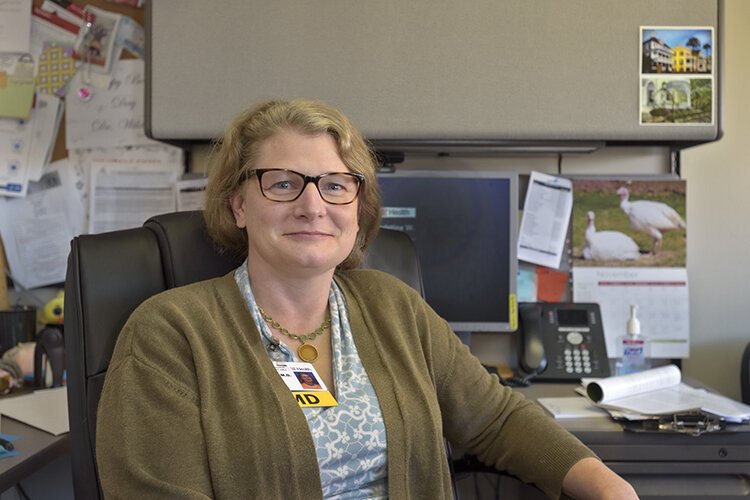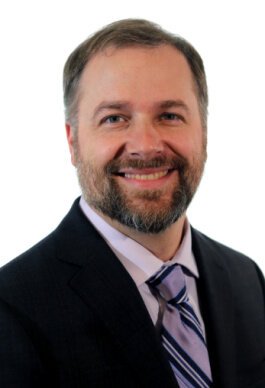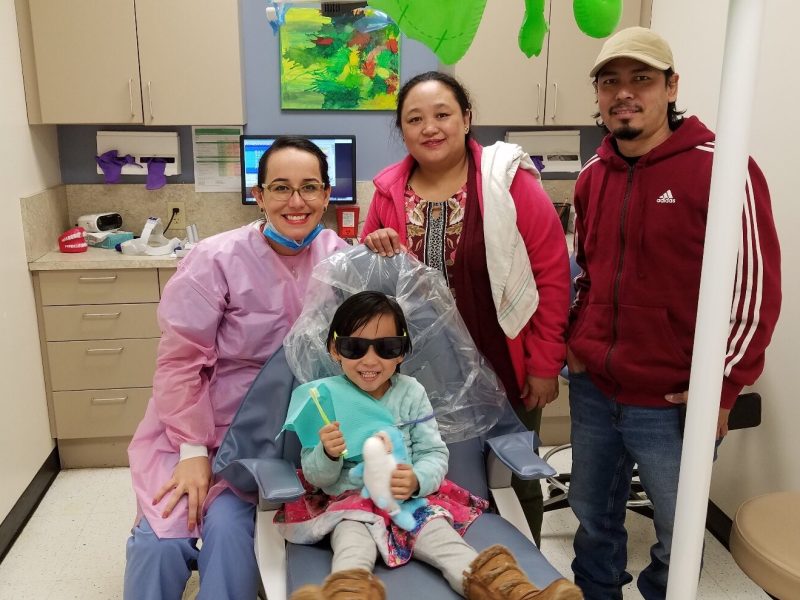Opioids and the pandemic: In the midst of isolation, there is hope
Although Ohio will likely have more overdose deaths this year than last, local courts and organizations are working to help people recover without penalty.

Ohio is on track to have more overdose deaths in 2020 than in 2019. Local courts and organizations are working to help people recover without penalty.
About a year ago, Vanessa Perkins bought a house in Grove City, just southwest of Columbus. The backyard is spacious, and the deck is like a refuge for her. To Perkins, it’s a miracle that she lives here.
Perkins started life broken. She was sexually abused from ages 4-12, and domestic violence was the norm in her home. As a teen, she found relief with alcohol and marijuana.
“With alcohol and weed, I could breathe,” says Perkins. “They were a solution for a problem that I didn’t have a name for. I just knew that when I drank or smoked, I didn’t want to kill myself or anyone else.”
Perkins advanced to opioid painkillers, like Tramadol and Vicodin, then to heroin and crack cocaine – any drug that was handy. To pay for her habits, she stole from family members and committed felonies. She became homeless, and human traffickers lured her into prostitution.
In the middle of this mess, Perkins ended up in Franklin County Court of Common Pleas, where she was given a choice: Accept drug treatment or head to prison. She chose wisely, though reluctantly, and today she’s been sober for 11 years. And she’s happy.
Perkins was lucky. According to the state of Ohio, 13 Ohioans die each day from unintentional drug overdoses. And experts agree that the opioid crisis — overdose deaths involving prescription opioids, heroin and fentanyl — has grown worse since the start of the COVID-19 pandemic earlier this year.

County court systems throughout Ohio are addressing the opioid crisis through specialty courts — also called specialized dockets or problem-solving courts — that help those charged with nonviolent crimes defeat their demons instead of sending them to jail or prison, thereby reducing recidivism.
Ohio has 261 specialized dockets, according to the Ohio Supreme Court, and more than 100 drug courts that deal specifically with addiction. There are also specialty courts for veterans, juveniles, and those with mental illnesses. Offenders receive long-term inpatient or outpatient treatment, sometimes for years, and often live in sober halfway or three-quarter houses after that.
In Franklin County, Perkins was signed up for CATCH Court, which stands for Changing Actions To Change Habits. The court, established in 2009, rescues victims of human trafficking who might also suffer from drug addiction, trauma and post-traumatic stress disorder.
However, those affected by opioid addiction don’t have to land in court to find help, and the state is looking for ways to make that help more easily obtainable. When Gov. Mike DeWine first took office in 2019, he launched RecoveryOhio, an initiative meant to improve the state’s approach to addiction and mental health treatments.
Still a work in progress, RecoveryOhio seeks to improve quality of care and access to treatment, educate children at an early age about addiction and mental illness, reach out to underserved populations, assist entire families impacted by addiction and create efficiencies among healthcare providers.
“Our state is committed to addressing the behavioral health crisis, including drug overdoses, that is going on right now,” says Rick Massatti, chief of addiction treatment for the Ohio Department of Mental Health and Addiction Services and the state’s opiate treatment authority. “As Ohioans, we will all work together and come out as better people.”
Drug courts
One of the first Ohio drug courts was in Hamilton County beginning in 1995. It was modeled after a specialty docket in Florida’s Miami-Dade County, which was created just a few years earlier in response to a crack cocaine epidemic.
Anne Yeager, Ohio Supreme Court spokesperson, says that in 2019 alone, more than 3,700 people had cases in Ohio drug courts. Nationally, an average of nearly 60 percent of drug court participants successfully completed their treatment programs. That number is about two-thirds better than the percentage of people who finish traditional probation programs and more than twice the percentage of successful probationers who are also drug addicts.
Perkins didn’t have the best attitude when she arrived at CATCH Court in Franklin County, but that changed when she was introduced to fellow human trafficking survivors and addicts. Fellowship with them was part of her program. She says they “spoke to her soul.”
“They gave me a little piece of hope, and loved me before I could love myself,” Perkins says. “They were relentless. They saved my life.”

The Cuyahoga County Court of Common Pleas Drug Court was launched in 2009 with Judge David Matia presiding. The court uses a team approach, with judges, prosecutors, defense attorneys, probation and corrections officers and local drug treatment providers, both inpatient and outpatient, working together. Twelve-step meetings are also part of the plan.
Matia’s drug court accepts people only if they have three or fewer felonies, and if they have no history of violence, sex offenses or drug trafficking. The team assesses each client to determine their level of need before a treatment program is chosen.
The Cuyahoga County drug court has admitted more than 1,300 people over the last 11 years. The graduation rate is 59%.
Matia says some in drug court are also experiencing ongoing trauma. The county court system has a separate docket for them.
“A lot of times drug abuse is an attempt to escape something,” Matia says. “That’s why they become addicts. We have to determine what trauma they are trying to get away from.”
Perkins can relate. She consumed alcohol and drugs to escape the trauma of her childhood, and as a result her road to recovery was long. She lived three years in Amethyst, an inpatient substance abuse recovery center in Columbus. She spent additional time at Freedom a la Cart, also in Columbus, which assists survivors of sex trafficking. There, she learned how to be employable, and the center even helped her find a job.
The COVID-19 effect
It’s hard to say whether COVID-19 has directly affected the opioid crisis, but everyone interviewed for this story believes the drug crisis has spiked since the pandemic hit earlier this year.
Massatti says that more than 3,000 Ohioans have died of unintentional drug overdoses so far in 2020. The number is on pace to exceed last year’s 4,200 overdose deaths. That’s partly because the amount of fentanyl, a powerful synthetic opioid, is rising in the state. Massatti says more than 90% of unintentional overdose deaths involves fentanyl or a similar drug.
As far as where it’s happening, the opioid epidemic, since it emerged in Ohio about 10 years ago, has been more pronounced in southeastern Ohio and Appalachia. Larger cities like Cleveland, Columbus, Cincinnati and Dayton are also hotspots.
“It’s a problem in parts of the state with people,” Matia says. “The crisis has hit both rural and urban areas. People of color at first weren’t affected but that changed with the introduction of fentanyl.”
Massatti said that fewer than 2% of opioid addicts receiving care have contracted COVID-19, according to patients reporting such information, so the pandemic’s direct effect on the opioid crisis is minimal.
However, Matia says inpatient treatment centers are not as full, as least partly because courts that send them patients have slowed down due to COVID-19. For example, a Cleveland center called Community Assessment Treatment Services, which is under contract with Cuyahoga County Drug Court, has 200 beds but is down to 100 patients.
Dr. Christine Wilder, an addiction psychiatry specialist with the Ohio Psychiatric Association, says treatment centers are still accepting patients although perhaps not as many, due to social distancing requirements.
On the other hand, Massatti said that according to the Ohio Board of Pharmacy, more people than ever are receiving medication-assisted treatments, or MATs, to help them overcome addiction.
Wilder said several studies are underway that may help clarify COVID-19’s effect on opiate addiction but it’s too early to know what the data will show. One thing is for sure, though: The isolation and quarantining that come with the pandemic is increasing depression, anxiety, and stress among everyone, including addicts who need to fellowship with each other to stay sober.
“People are not designed to isolate,” Dr. Wilder says. “Humans are extremely social, so being socially isolated is hard for people.”
Using technology
Specialty courts are adapting to life during COVID-19 through technology.
Judge Taryn Health of Stark County Honor Court, which treats military veterans, says her court shut down earlier this year due to the pandemic. In April, the court started scheduling hearings on Zoom.
Matia says Zoom hearings and meetings are not only convenient for offenders, who don’t have to drive all the way downtown thanks to the technology, but also for the drug court team. They can meet online instead of assembling from different floors and buildings. Matia says the court will continue using Zoom long after the pandemic.

Telehealth — the use of phones, video chats, texts, and email to administer healthcare — is another technological breakthrough for drug courts and treatment programs during the COVID-19 pandemic. Heath says she ensures that all of her clients carry smartphones with recovery apps, through which they can check in with their mentors and probation officers.
Dr. Wilder says such technology is priceless during times of isolation because daily contact with sources of help is critical for those recovering from addiction.
New programs are also emerging, says Robin Bozian, project managing attorney with Southeastern Ohio Legal Service in Athens, a sister company of The Legal Aid Society of Columbus. For example, the Ohio START program, launched about three years ago in five or so counties, is working to keep families together as they deal with addiction. The program, a partnership between the courts, children services organizations and treatment providers, is expanding into different counties.
In addition, the state has created a county hub program to fight opioid addiction. Each hub includes a board, and the boards were required to submit their first reports in January 2020. The reports demonstrated how the county hubs were attempting to meet the program’s goals, which include strengthening addiction treatment efforts and educating young people about addiction.
Looking ahead
With all this going on, holes in the addiction recovery system still need to be filled. Bozian says there are few treatment centers in southeast Ohio and Appalachia, where the problem is particularly bad. A Marietta resident seeking help must drive 2 ½ hours to Portsmouth for treatment. Telehealth bridges the gap somewhat but isn’t the complete answer.
Matia warns that detox centers — where addicts are physically weaned off drugs before dealing with the mental aspects of addiction at long-term treatment facilities — are in short supply. He says detox centers are vital; addicts will avoid seeking help because they are terrified of withdrawing from drugs.
Matia believes that some of the money going to communities through lawsuits against pharmaceutical companies that promoted the use of opioids should pay for new detox and treatment centers, as well as workforces needed for those centers.
Perkins, who detoxed in jail, would agree, but she’s grateful for the help she has received. Today she works in the very Franklin County court system where she once faced criminal charges. Freedom a la Cart helped her find employment there, first as an intake counselor. Then she was promoted to legal administrative assistant, then chief prosecutor’s assistant, then bailiff, which is her current position.
“I really try to slow down enough to remember where I came from,” Perkins says. “No matter what challenge happens today, it’s never as bad as it was then.”
TEST YOUR CIVICS KNOWLEDGE WITH OUR QUIZ.
Support for Ohio Civics Essential is provided by a strategic grant from the Ohio State Bar Foundation to improve civics knowledge of Ohio adults.
The views expressed herein do not necessarily represent those of the Ohio State Bar Foundation.














